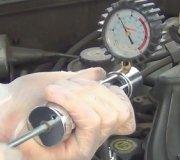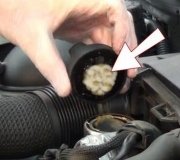There needs to be a reason for replacing the entire engine. When a replacement cylinder head gasket fails, something wasn't done correctly or was overlooked. Some shops tell their mechanics to just slip in a new gasket because they know there's a good chance the failure rate will be low, and they accept that. Other shops value their reputation and don't leave anything to chance, but they have to charge more for parts and for labor. This guide can help confirm the issue.
https://www.2carpros.com/articles/head-gasket-blown-test
In this case surface preparation of the two mating surfaces is critical and is specified by the manufacturer. That means you don't just scrape off the old gasket material. Air-powered tools with cleaning discs are used to clean the surfaces and create scratches for the new gasket to bite into. Many mechanics also use spray-on gasket sealers made for head gaskets. There's extra cost and time involved but they do that to insure the quality of the repair.
The cylinder head must be checked for cracks, and the sealing surface must be checked for warpage. Unless specified differently by the manufacturer, .002" is the maximum allowed warpage in any direction across the head. Some heads can be machined to make them true but if the camshaft is on top of the head, it must be heated in an oven and straightened. Machining those will leave the camshaft journals out-of-line.
Most mechanics generally just do a visual inspection for cracks. They don't go any further because they aren't that common. It's typically when the second repair is needed that they look further. That usually involves sending it to an engine machine shop where they use a dye to make cracks show up or metal filings and a magnet. Heads with cracks are replaced. Heads with no cracks are resurfaced, cleaned, and reused.
There is also a very specific tightness the head bolts are tightened to, and they are tightened in a certain order. Failure to follow the manufacturer's directions can result in uneven clamping forces. Normal engine temperatures with uneven clamping can result in a warped head and a gasket that leaks soon after the repair.
None of these things require replacement of the entire engine, especially since the used one you're getting could develop the same problem. On very rare occasions there could be a crack in the cylinder block causing the white smoke you're seeing. That WOULD be cause to replace the engine but that is so rare many mechanics will never see one.
Friday, April 23rd, 2021 AT 9:32 AM



